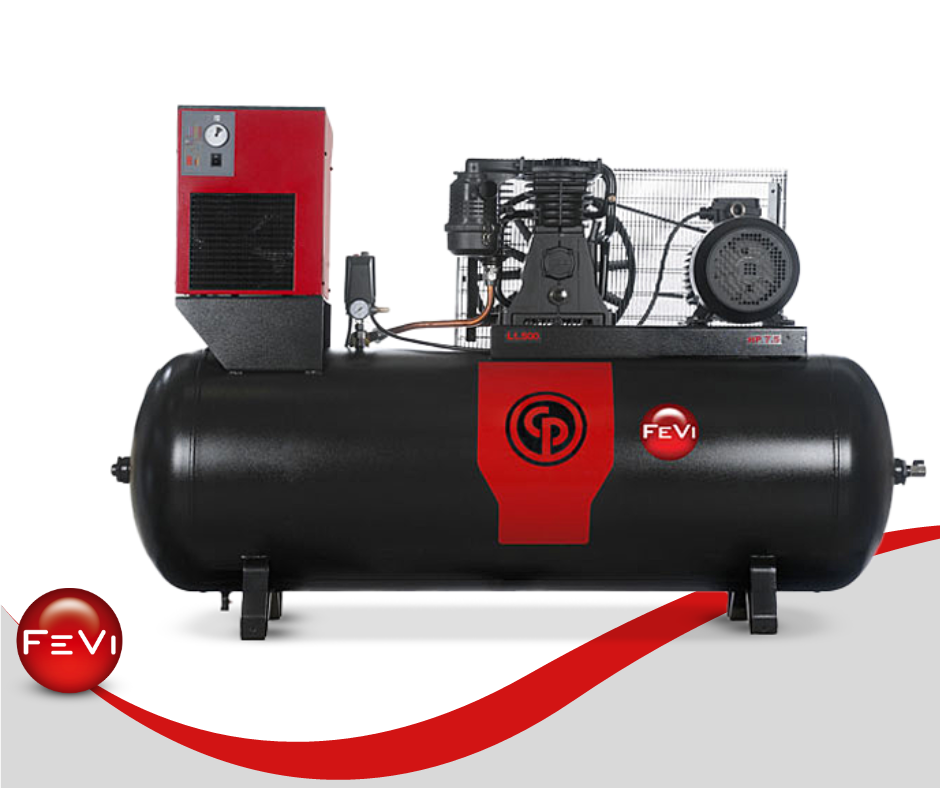The importance of compressed air for the proper functioning of the sandblasting machine
Reading time : 4 minute and 30 seconds
In this article, we will talk about the importance of compressed air for the proper functioning of the sandblasting machine and how its underestimated or incorrect use can cause malfunctions of the machine itself. Compressed air is often considered a trivial element, but in reality its quantity and quality are crucial to ensure good sandblasting and the proper functioning of the pneumatic system. Compressed air must be used accurately, following quantity and quality guidelines, to avoid condensation and contamination of the system. In addition, paying attention to the correct amount of air available and the quality of the compressed air used is essential for an informed choice of equipment and to ensure safe and long-lasting use of the machine.
Compressed air is essential for the operation of the sandblasting machine and the result of the blasting itself depends on both the quantity and the quality of the air used.
When it comes to quantity, it's important to have the right airflow rate to power the sandblaster. As far as quality is concerned, on the other hand, compressed air must be subjected to cleaning, drying and condensate filtration treatments through the use of specific dryers.
In summary, to ensure proper operation of the sandblasting machine and high sandblasting quality, it is essential to pay the right attention to the use of compressed air, respecting the indications regarding the quantity and quality of the air needed.
What happens when air is compressed and released from the compressor?
The process is quite simple: the air is heated up to 100 degrees and, at the time of escape, it can encounter outside temperatures between 5 and 40 degrees. This causes an abrupt change in temperature and condensation to form within the airflow. These particles, which are potentially polluting and oily, can clog or even block the pneumatic system. We can compare this system to blood circulation: the valves regulate the airflow and operating pressure. If the flow is not clean, it becomes a source of contamination that can compromise the operation of the entire system. In fact, even the smallest amount of contamination can have a negative effect on production, quality and work safety. Therefore, it is crucial to ensure that the pneumatic system is consistently clean and efficient to prevent potential problems.
It is extremely important for us to consider the flow rate and quantity of air when we receive requests for sandblasting machines of various types.
. However, the customer is not always aware of the amount of compressed air available. Therefore, it is imperative to make an accurate specification and calculation to determine the suitability of the compressor for the machine you want to use. For example, a ten-horsepower compressor is capable of guaranteeing a flow rate of one thousand liters of air. This is crucial to ensure that the right amount of sand needed for production is released. P
This is crucial to ensure that the right amount of sand needed for production is released. Providing the customer with accurate information on the amount of air available is essential to make a proper choice of equipment.
The need for air is often underestimated when using a sandblasting machine, mistakenly coming to the conclusion that a few litres are enough to operate the machine.
However, from our consumption tables and data sheets, it emerges that a simple four-millimeter nozzle under six bar already consumes as much as eight hundred and fifty liters per minute. In the case of larger nozzles, such as eight or ten millimeters, the consumption can exceed five thousand liters per minute, requiring great attention from the user.
In addition to the use of the sandblasting machine, compressed air becomes an additional element to consider. The use of quality air is essential to ensure the proper functioning of the pneumatic system in the long term, in particular ensuring a longer life and tightness of the valves. Through the use of specific treatments, the life of the valves can be preserved for up to six or seven hundred hours. Clean air is an essential factor for the proper functioning of the sandblasting machine and its pneumatic circuit, therefore attention must be paid to the appearance of the air.
Seven hundred hours of use or even just one hundred hours in a polluted environment can have serious consequences on the quality of compressed air and, consequently, on the health of the future user. The assessment of compressed air quality should not be neglected, ensuring the use of contaminant-free air. This helps prevent further problems that could aggravate the initial picture.
The quality of the compressed air is a fundamental element in ensuring reliable and long-lasting use of the sandblaster, and should not be underestimated.
Conclusion
In summary, the correct functioning of a sandblasting machine is closely connected to the management of a simple but vitally important element: compressed air.









